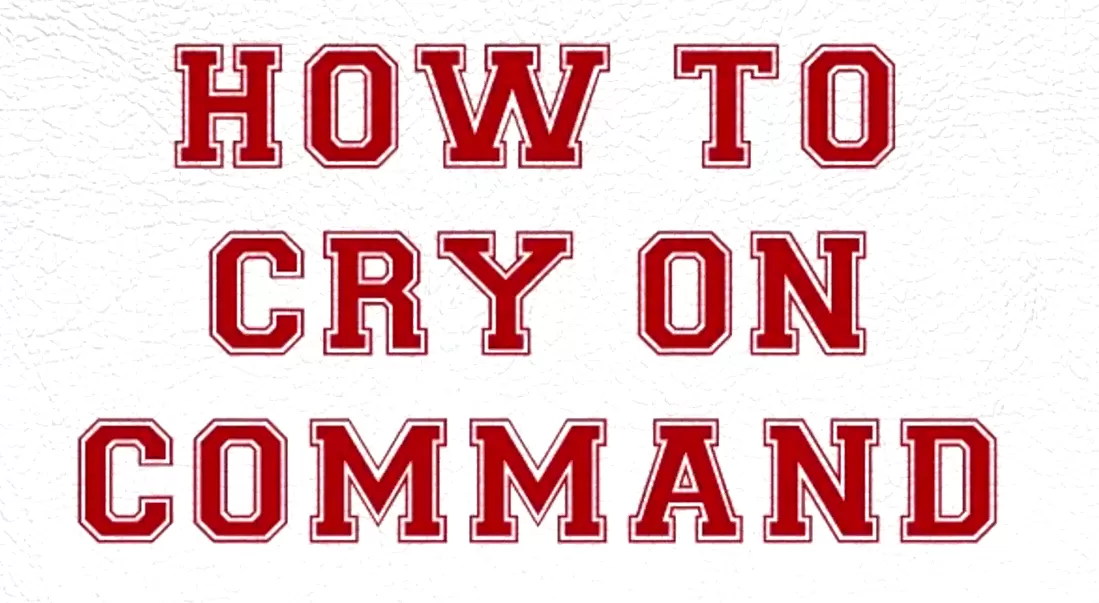How To Cry On Command
Crying is a natural human response that helps us manage our emotions. It can be an effective way of communicating to others how we feel, even when words are difficult to express. However, not everyone can cry on command, especially when it might be beneficial to do so. Learning to cry on command can help actors portray their characters more realistically and enable people in daily situations such as interviews or important conversations.
To cry on command, it’s essential to tap into the emotion you want to convey. It could mean recalling a personal experience that made you sad or imagining yourself in the shoes of someone going through a tough time. Once you’ve triggered the emotion, focus on your breathing and allow yourself to fully immerse in the feeling without trying too hard. Gently rubbing your eyes or conjuring up physical sensations like yawning can also help induce tears.
It’s important not to force yourself if tears aren’t coming naturally – crying should always result from genuine emotions rather than just for show. With practice and patience, anyone can learn how to cry on command and use this innate human ability for effective communication and emotional management.
How to fake cry
- One of the most effective ways to fake crying is by thinking of a personal experience that evokes strong emotions. You can close your eyes and visualize the scene in detail, then let the tears flow naturally. Alternatively, you can try to tap into a universal emotion such as loss, betrayal or injustice.
- Another trick is to use physical stimulation to induce crying. For instance, you can hold your breath for a few seconds and then exhale sharply while scrunching up your face and making sobbing sounds. It will trigger an automatic response from your tear ducts, producing tears.
- You can use artificial methods such as eye drops or onions if all else fails. Eye drops containing tetrahydrozoline hydrochloride (Visine) or naphazoline hydrochloride (Clear Eyes) will constrict blood vessels in your eyes, making them appear red and teary. Onions contain sulfur compounds that irritate your eyes and cause them to water profusely – just be prepared for some stinging sensations!
How to cry on cue
Method 1: Emotional Recall
An emotional recall is a technique that involves drawing on your own past experiences to evoke emotions. To use this method, you need to think of an experience that made you sad or emotional. As you replay the memory in your mind, focus on the feelings and sensations that come with it. Try to immerse yourself entirely by imagining what it would be like if you were back there.
Method 2: Physical Triggers
Physical triggers can help elicit an emotional response from your body. One way to do this is by using eye drops or saline solution. Put a few drops in each eye and allow them to sit for about five minutes before wiping away any excess liquid. It will cause your eyes to water significantly, making you cry easier.
Method 3: Acting Techniques
Actors often use techniques (e.g., Stanislavski Method) to create believable emotions on stage or screen. These techniques include visualization exercises, sensory exploration, physical warm-ups, and improvisation work.
Crying in public: There are many reasons why people cry in public, but it’s usually done for one of three reasons: as a form of communication, for relief or as entertainment.
How to cry on command: There are many ways to cry on command, but the best way is to use a combination of techniques that work for you.
How can I learn to cry on command?
Learning to cry on command is valuable for actors, public speakers or anyone who wants to convey emotions authentically. However, it takes more than just pretending to be sad. To achieve a convincing performance, tap into your feelings and let them flow naturally.
One effective technique is to recall a personal memory that evokes an emotional response. It could be a happy moment, a traumatic experience, or something. Once you have identified the memory, visualize it in detail while focusing on the associated feelings. It can help trigger tears and create an authentic performance.
Another approach is physical stimulation. Some actors use eye drops or mentholated products like VapoRub around their eyes before shooting emotional scenes as they can help produce tears faster. Additionally, you can try blinking rapidly or staring at a bright light momentarily, as both actions stimulate tear production naturally.
FAQs
What are some techniques to help me cry on command?
One technique is to use emotional memory recall. Think of a personal experience that made you sad or hurt, and use that emotion to trigger tears. Another technique is eye drops, which can be used sparingly, but it’s important not to rely too heavily on them as they irritate your eyes.
How do I avoid looking fake while crying?
To avoid looking fake, focus on making the cry genuine by incorporating physical cues such as trembling lips or a quivering chin. Additionally, try not to overdo the tears themselves; instead of bawling loudly, opt for quiet tears streaming down your face.
Is there anything else I should remember when trying to cry on command?
Remember that crying is a natural human response; we all do it differently. Try not to put too much pressure on yourself or your ability to produce tears quickly; instead, focus on embodying the emotions and letting your body naturally respond in its own time.










